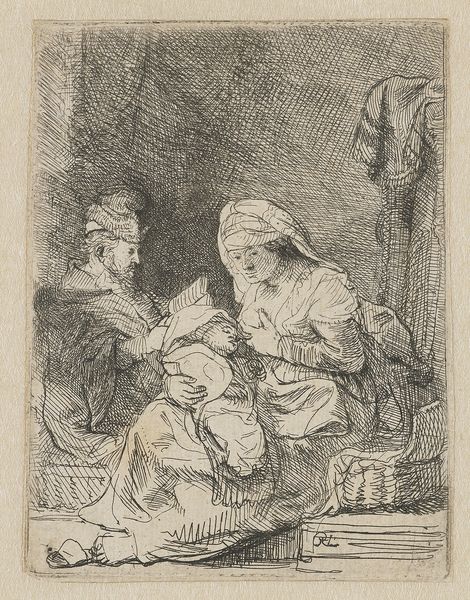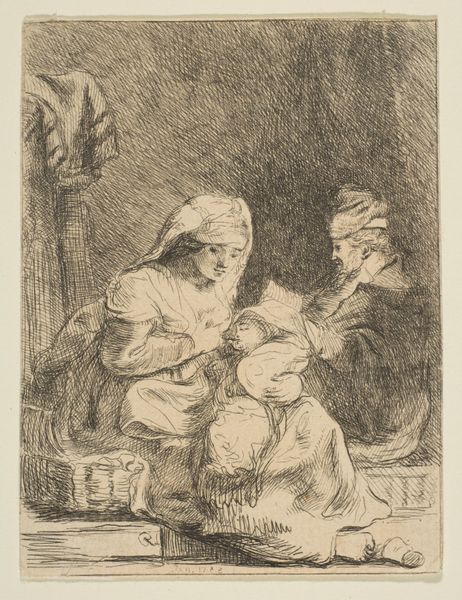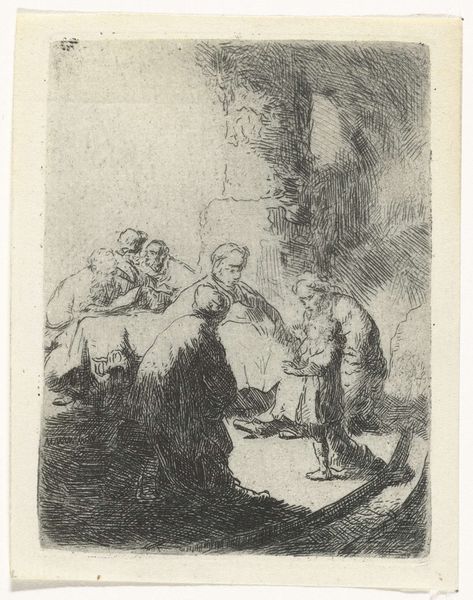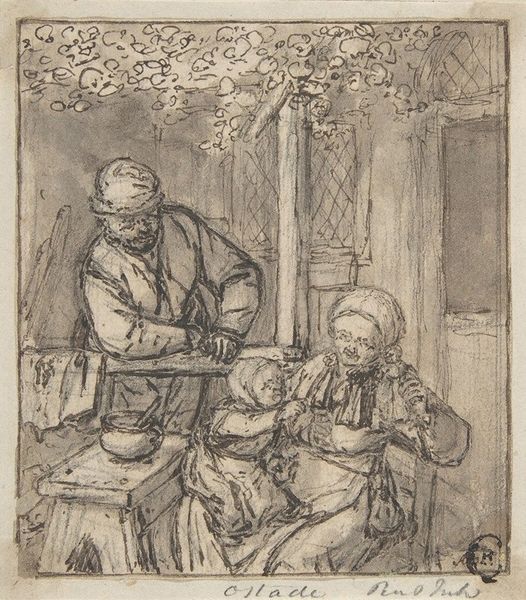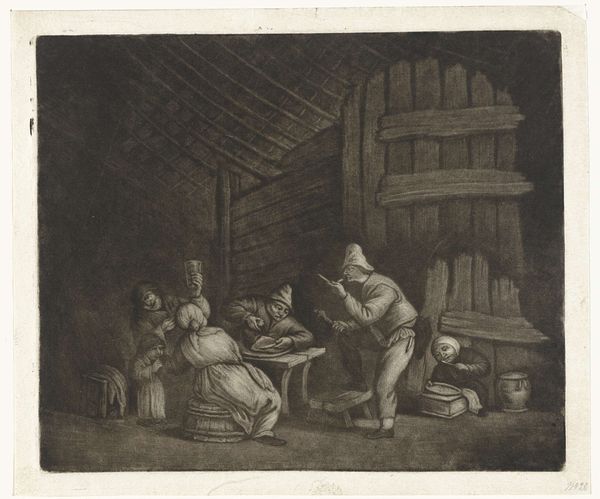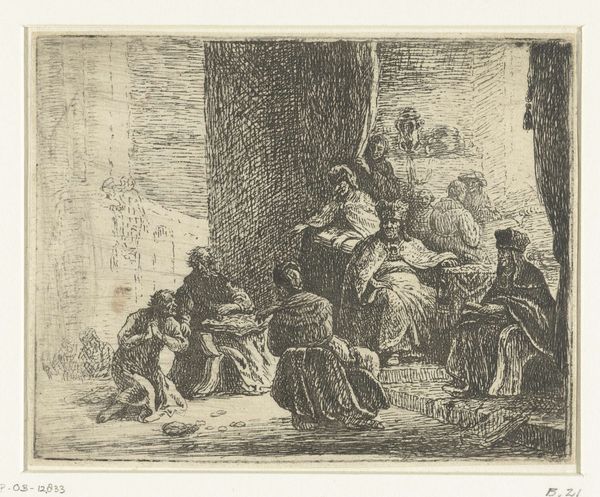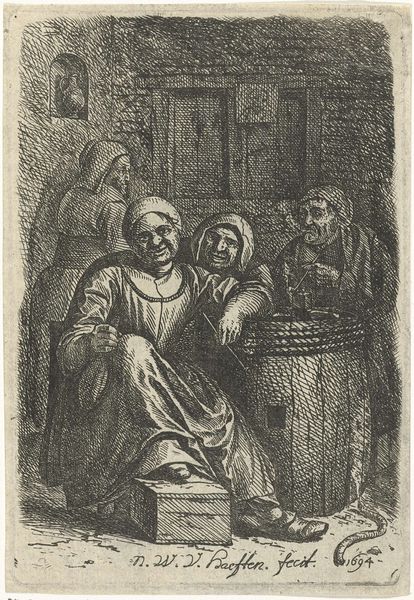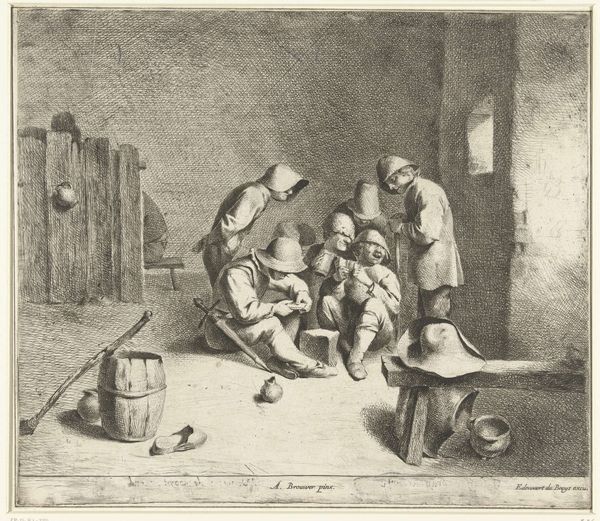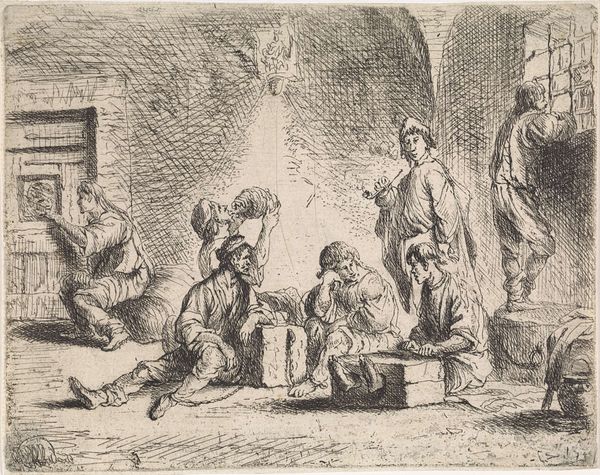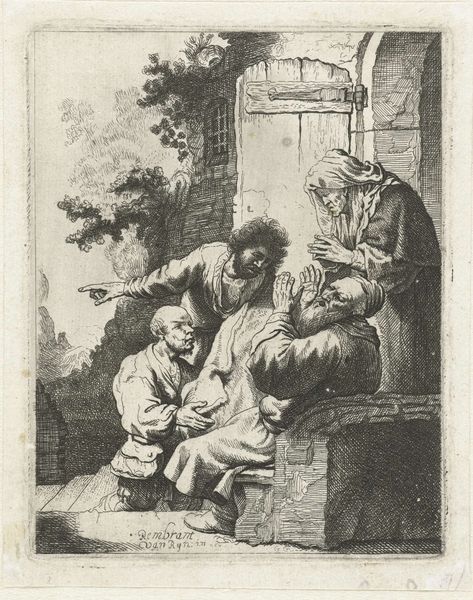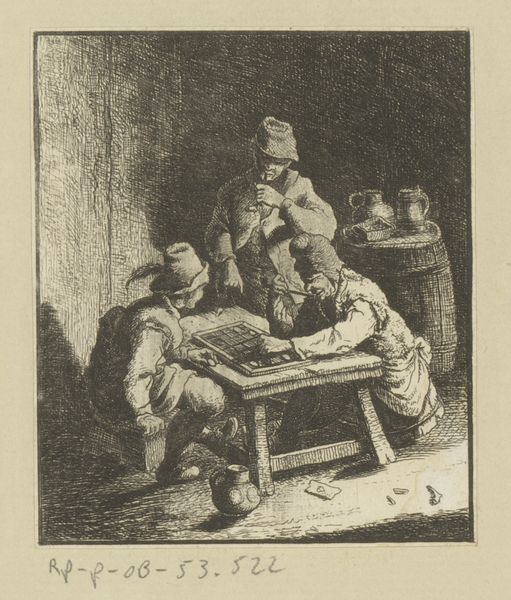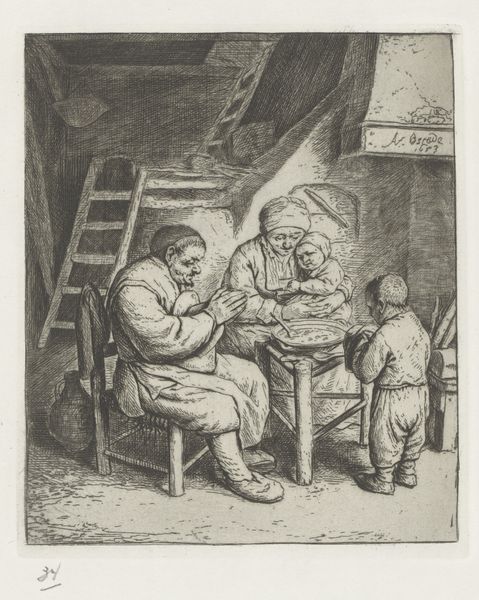
print, etching
#
narrative-art
#
baroque
# print
#
etching
#
old engraving style
#
figuration
#
genre-painting
Dimensions: height 147 mm, width 205 mm
Copyright: Rijks Museum: Open Domain
Curator: Pieter Fransz. de Grebber, sometime between 1610 and 1655, created this etching titled "Jozef verklaart de dromen van de bakker en de schenker." Editor: It's a wonderfully somber composition, cloaked in shadow. The stark lines and contrasts create a very palpable sense of confinement, wouldn't you agree? Curator: Absolutely. The formal structure uses light to emphasize the dynamism between the three figures. Consider the textural gradations and line weights defining their clothes against the dark backdrop. We're seeing the early manifestations of Baroque techniques here. Editor: For me, it’s the visible labor that sings. The material limitations inherent in etching force an interesting rawness, right? The starkness is enhanced by the tools involved in what seems a stark social reality. You can almost smell the ink and metal used in its production. Curator: Yes, and those very lines articulate so much. Observe how de Grebber uses them to give an architectural understanding of space but, more importantly, imbues the figures with interiority, conveying psychological depth through posture and gaze. Note the older men and their expressions as the younger Joseph explains their fate. Editor: Which itself is influenced by the social constructs dictating labor in artistic environments. De Grebber likely worked within a studio structure, dictating who and how these stories would emerge, mediated, as always, through economic relations within artistic guilds of the period. Curator: Perhaps. Still, I'm drawn to the thematic and art-historical echoes in the etching; it invites interpretation through its masterful manipulation of the medium to achieve particular symbolic resonances. Editor: It's about the people involved, not simply what it seems to convey, but what process brings that story to life, embedding cultural and industrial processes in art-historical practices. We need to acknowledge them both. Curator: A good point. I hadn't quite considered the intersection of artistic and societal narratives so thoroughly, but the way these processes and themes become inseparable makes for richer observations. Editor: Indeed. There's a complexity introduced when thinking about both the story depicted in an image and how materials or labor influenced it, allowing for us to appreciate these works of art more fully.
Comments
No comments
Be the first to comment and join the conversation on the ultimate creative platform.
